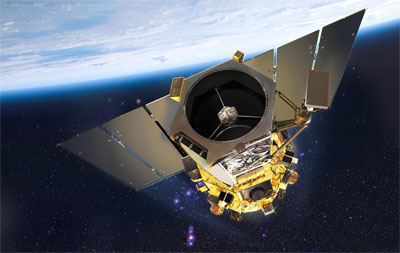Spy satellites lose their mystiqueby Taylor Dinerman
|
| Congress is refusing to go along with the administration’s latest plan for the new NRO satellites. This congressional revolt has been brewing for a long time. |
The FIA program began as a series of analyses in 1996, and it was first funded in the FY 1998 budget. The goal was to produce a series of spy satellites that would be just as good as the Keyhole optical and Lacrosse radar satellites at a fraction of the cost. Many leaders in Washington at the time, notably Vice President Al Gore and Speaker of the House Newt Gingrich, were true believers in the all-encompassing digital revolution. They and others were persuaded that by using new technology, and a new procurement and design approach, the US government could buy many more eyes in the sky for same price it was then paying for the previous generation.
The program was finally canceled in 2005 after numerous cost overruns. Since then it has been hard to get a handle on what the NRO is actually doing. Reports have it that they ordered a new generation of incrementally improved Keyhole-type satellites from Lockheed Martin, while Boeing continues work on a new type of imaging radar satellite to replace the Lacrosse ones. It was also reported that Congress refused to fund the NRO’s first attempt replace the FIA with something called the Broad Area Satellite Imagery Collection (BASIC).
Earlier this year the Obama Administration decided that they would adopt a “Two plus Two” approach: two improved commercial remote sensing satellites and two next-generation, very capable spy satellites. If this program could be carried out on time and within budget it would fill the minimum US national requirements for the next decade or so. However, as Senator Bond pointed out in a letter that was leaked to the press last April, the chances of this happening “approximates zero”.
Instead, the senators propose that another current-generation spy satellite be acquired and that a whole new type of spacecraft, based on distributed architecture, be developed, presumably to become operational sometime in the 2016–2017 timeframe. The NRO believes that this is an even riskier proposal than their “Two plus Two” project. Indeed, the technologies needed to build such a system are nowhere near ready. No one has yet demonstrated precision orbital formation flying, let alone the kind of integrated optics that would be needed. Yet in the long term this is exactly the sort of survivable and upgradeable space-based intelligence system that the US will need in the 2020–2030 timeframe.
It would be nice if the NRO could build such a system within six or seven years, but without a sufficient technological base, it is highly unlikely that this could be done with the kinds of budgets that are likely to be available. DARPA has taken a few baby steps in this direction by funding the F6 (Future, Fast, Fractionated, Flexible, Free Flying) satellite development program, but it will be a long time before this project produces any operational spacecraft (see “Breaking up may be good to do”, The Space Review, November 2, 2009). Meanwhile, the IC and the Defense Department must make do with what they have on hand.
Feinstein and Bond would have a far better case if they had proposed that instead of building one more current-generation high-quality satellite they had suggested that the NRO buy three or even four of the type now in production. This would solve, at least temporarily, the possible gap in US overhead optical intelligence. Given the state of the world the US cannot afford another situation such as existed after the 1986 Challenger disaster. For more than a year in the late 1980s the NRO had only a single Keyhole in operation.
| The NRO cannot expect the Congress to simply accept their decisions. The aura of expertise that they once enjoyed is gone. |
Fortunately, the commercial remote sensing industry can fill some of the roles that used to be strictly the domain of the NRO. Helping the industry to buy at least two more satellites is obviously an urgent requirement. This decision should be completely divorced from the question of what kind of high-quality system to buy for the NRO.
Finally, there is always the problem of ground-based image interpretation. Reports indicate that there has been some progress on this and that troops in the field, and even some allies, now have routine access to good-quality, satellite-derived imagery. The NRO and the Defense Department must press on with this effort. Above all they have to keep training new generations of image interpretation specialists: after all, without competent people, the best hardware in the world is useless.
Spy satellites have become so common that almost every medium-sized military power has at least some capability. The Turks and the South Koreans have plans to join the club. Brazil has a longstanding agreement with China that allows both nations to share Earth observation data from their CBERS satellite that has at least some military usefulness. This proliferation is changing the whole nature of the debate over these systems. The need is not just for a few highly-capable spacecraft, but for a fairly large number of survivable ones that can be easily replaced, possibly with on-orbit spares.
The NRO cannot expect the Congress to simply accept their decisions. The aura of expertise that they once enjoyed is gone. They are going to have to learn to scramble for their funding, like the rest of the executive branch.
